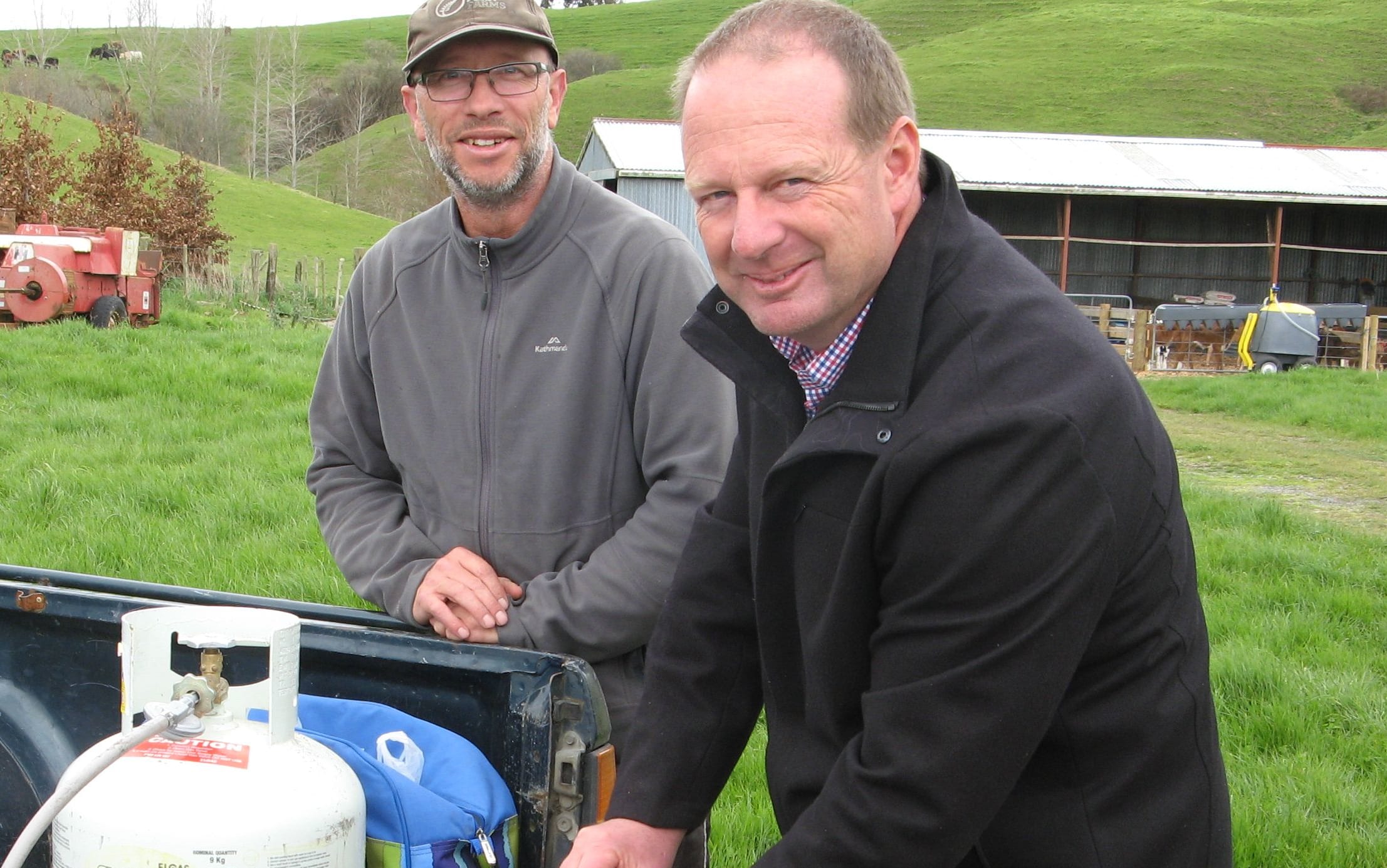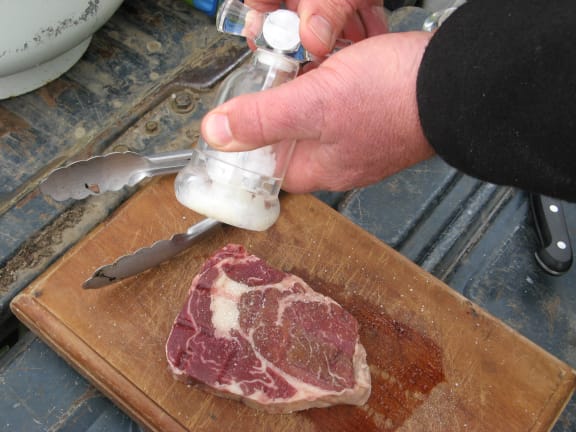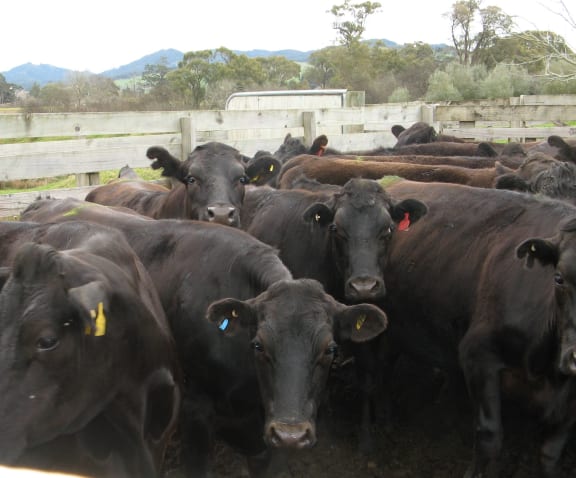An "explosion of juices in your mouth", and "like nothing you've ever had before", is how Waikato farmer James Reeves describes eating a fat-marbled Wagyu steak.

Wagyu farmer and Wagyu buyer Photo: RNZ/Susan Murray
It's an experience he reckons everyone should have at least once in their life. It's one that most people could only afford once, but James says after tasting a sizzling, succulent slice straight off the barbecue "who could disagree?"

Wagyu steak Photo: RNZ/Susan Murray
Firstlight Foods, a specialist meat marketing and exporting company, started dealing with the traditional, highly marbled, Japanese Wagyu breed six years ago. Back then James and his brother were two of only a handful of farmers who got involved with them. Now there are 37, with 10 more joining this exclusive club next year.
The company exports its beef to California, UK supermarkets and to Europe and the Livestock team manager Peter Keeling says their sales representatives are crying out for more.
More product that could come, he says, from dairy farmers. Initially Wagyu sires were used with Angus and Hereford cows, but now dairy breeds are also producing a good product.
Peter says another advantage with the dairy Wagyu cross beef is it has yellow fat: "giving customers certainty that the animal was grass-fed. Grain fed meat has a whiter fat."
Overseas customers pay big money for the prime steaks which could be up to 50 percent fat, but the fat doesn't scare those involved with the breed because they say tests show it has a higher Omega 3 content than the traditionally reared grain-fed beef. "They're the good chemicals," says Peter.

Wagyu Cattle Photo: RNZ/Susan Murray
Farmer James Reeves says the Wagyu grow well enough, and it's a mistaken belief they're hard to finish. He says their temperament has also improved in the past two years.
Looking at his cattle waiting to be loaded and trucked to the meat works he says, "in the past these would have been circling around and around in the yards, now they're just standing. It's the dairy influence because the calves are virtually hand reared."

